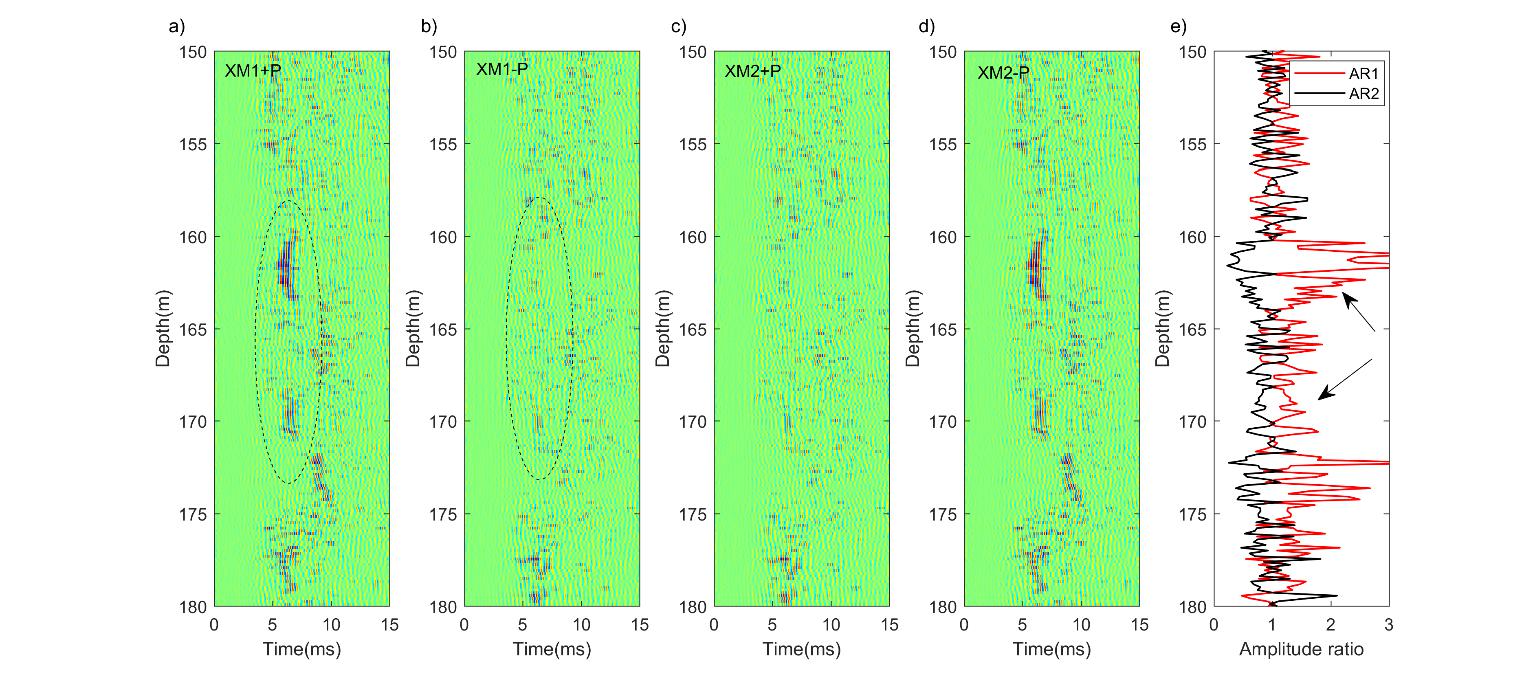In deep oil and gas exploration and development, reflectors outside the borehole usually indicate the potential oil and gas reservoirs, such as caves or fracture zones. The generally used cross-dipole SH reflection in borehole remote exploration imaging has a 180-degree azimuth uncertainty due to the ambiguity of azimuth inversion, which has brought great troubles to resource exploration and mining. Therefore, due to the limited borehole size, the problem of far-field azimuth analysis based on this limited aperture has always been an international research focus and difficulty in this field.
To solve this problem, researchers from the Institute of Acoustics of the Chinese Academy of Sciences (IACAS) proposed a method for identifying the reflector azimuth based on the borehole multicomponent cross-dipole acoustic measurement. Based on the far-field radiation theory of the dipole source in the borehole, this method introduced the reflected P-wave induced by the dipole source as a constraint condition into the dipole shear wave imaging, and proposed a weak signal separation method for the dipole P-wave.
In the research, the uncertain angle is obtained through azimuth analysis of the dipole SH wave. Then the reflection azimuth outside the borehole is indicated based on the analysis of dipole-dipole and dipole-monopole mode P-wave reflections and the introducing of amplitude ratio parameters. Therefore, it provides an effective solution to the true azimuth imaging of the reflected wave.

Figure.1. Schematic diagram of the azimuth of an interface outside the borehole (Image by IACAS)

Figure.2. Stacking results of dipole P-wave modes and azimuth indication curves for adjacent well (Image by IACAS)
Researchers hope to locate the geological structure interface according to the characteristics of the reflected wave and accurately identify its azimuth outside the borehole. This method has been verified by the multicomponent dipole shear-wave remote detection imaging tool which is independently developed by the research group. The validation test is based on an experimental well and an adjacent well. The traditional dipole method shows the existence of an adjacent well and indicates the azimuth. However, there is an uncertainty of 180 degrees. The new method separates P-wave reflections through a series of weak signal extraction methods, and then uses different P-wave reception modes to stack. The azimuth indication curve clearly indicates the azimuth of the adjacent well, which is consistent with the actual measurement.
This method is of great significance for guiding the effective exploration and development of deep oil and gas resources.
The research, published online in the international academic journal Geophysics, was supported by the National Natural Science Foundation of China (Nos. 42004117 and 11774373).
Reference:
LL Chao, CHEN Hao, HE Xiao, WANG Xiuming. Identifying reflector azimuth from borehole multicomponent cross-dipole acoustic measurement. Geophysics, 2021, 86(6): D201–D214.DOI: 10.1190/geo2020-0460.1.
Contact:
ZHOU Wenjia
Institute of Acoustics, Chinese Academy of Sciences, 100190 Beijing, China
E-mail: media@mail.ioa.ac.cn


